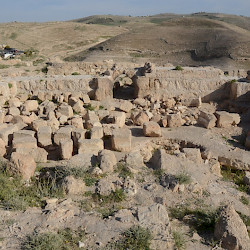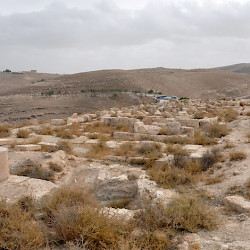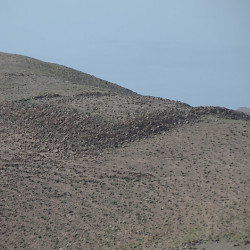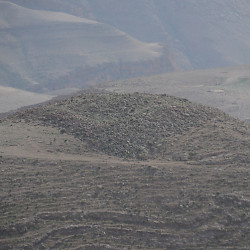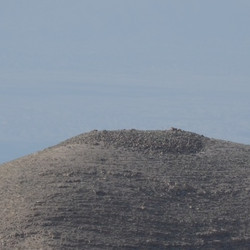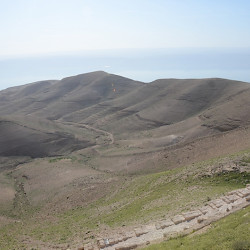Machaerus
Q1549278Machaerus (Greek: Μαχαιροῦς): Judaean fort on the east bank of the Dead Sea, best-known as the jail where John the Baptist was executed, modern Rujm al-Mišnaqa.

Situated on a conical hill surrounded by deep valleys, Machaerus was built by the Hasmonaean king Alexander Jannaeus (r.104-78)note on the eastern border of his kingdom, to defend Judaea against the Nabataeans,note an Arab nation in the south of what is now called Jordan. The Jewish historian Flavius Josephus says that the fort was "laid upon the mountains of Arabia".note The meaning of "Machaerus" is not known, but Greek-speaking people must have recognized the Greek word machaira (μάχαιρα), "sword".
The Graeco-Roman geographer Strabo of Amasia mentions that the Roman commander Pompey the Great, having captured Jerusalem in 63 BCE, looted Machaerus, which he believed to be "the haunt of robbers and a treasure-hold".note Several years later, in c.56 BCE, the Roman governor of Syria Aulus Gabinius destroyed the fort. (One of his subcommanders was Mark Antony.)note

King Herod the Great (r.40-5/4 BCE) rebuilt the fort on the hill, which was not far from his villa at Callirhoe, and added a town.note Josephus mentions a road to the summit, a wall with towers of 160 cubits height, cisterns, an armory, and a splendid mansion with nice rooms.note An aqueduct has been identified archaeologically.
Machaerus served as prison; Josephus tells us that one of the captives was the Jewish eschatological preacher John the Baptist, who had been calling the people to repent and restore their ritual cleanness not far from Machaerus, near the place where the road from Jerusalem to Philadelphia crossed the river Jordan. King Herod's son and successor Herod Antipas ordered the baptist's execution, which must have taken place in one of the prison cells of Machaerus.note

The Roman author Pliny the Elder mentions that Machaerus was the strongest fortress in the area after Jerusalem.note During the Jewish revolt that started in 66, Jewish rebels captured the fort, which held out against the Roman besiegers until 72, when the governor of Judaea, Sextus Lucilius Bassus, employed the Tenth Legion Fretensis to eliminate the last pockets of resistance, laid siege to the fort, and captured it.note
Archaeologists have identified several Roman forts, but they were never completed because the defenders surrendered before the final clash. The siege dam mentioned by Josephus as being to the east of the fort,note was in fact to the west.
The site was reoccupied in Late Antiquity. It is now known as Rujm al-Mišnaqa.
Literature
David Kennedy, The Roman Army in Jordan (2000)
